Lower Charles St, Launceston. Google Maps.
Opened 1833, as a single storey brick building. When the congregation moved to a newer, larger kirk in Paterson St, the building was sold and has seen various uses including as stores, a printery and offices. It was during this later period that it gained the second storey and new front part.
The Rev. Mr. Mackersey preached yesterday to a small congregation at the court house here. Few persons knew of the service, or we doubt not it would have been numerously attended. The stern, but pure simplicity of the Presbyterian form of worship, strikes to the heart of those readers who read and admire the Testament. It approximates so closely upon the form used by the Apostles, while it has no show, no pomp, no glare to catch the eye (leaving the mind at liberty to roam.) The chasteness and simplicity of true piety appears throughout the whole service, and the impressive solemnity of the–Amen, when pronounced so feelingly by the Pastor, with the slow but solemn response of the whole congregation– Oh ! it is delightful to a heart of sensibility, it is surely a foretaste of something to come. We are given to understand that an attempt will be made to find what amount will be given amongst the Scotch, and other well-wishers to the Kirk, towards the support of a Clergyman, and should it succeed, which we doubt not, we may shortly expect once again to see two places of worship in this little town.
Launceston Advertiser, 30 March 1829
It was on April 9, 1831 that Presbyterianism began to “take hold” in Launceston. On that date a meeting was held in the school house, when it was decided “that it was highly desirable to have a Presbyterian kirk built at Launceston, and also a suitable residence for a clergyman.” Also “that a committee be appointed to receive subscriptions for the accomplishment of that work.” It was further decreed “that the kirk be under the jurisdiction of the Presbytery of Edinburgh, and that the committee correspond with the Presbytery for the appointment of a minister, etc.” The committee was appointed and consisted of men, some of whose names are familiar to many of Launceston’s present citizens, namely, Mr. Thos. Scott, Lieut. Thompson, Mr. Archibald Thompson, Mr. Sprunt, and Mr. Alexander Wales. Until the erection of the proposed church building had been accomplished, services were held in the old Court House on Sabbath mornings at 11, and in the afternoon at 2. The church was erected in Lower Charles street, and was opened on October 13, 1833, at 11 a.m. The building, which is of brick, has had alterations and additions made to the front part to suit the requirements of business.
The Examiner, 27 April 1935
In February, 1833, the Rev. John Anderson arrived at Launceston, and the Scottish National Church, as it was called, was opened for services on Sunday, October 13, 1833. The building, which was in lower Charles St, was of brick, and the fine workmanship is shown by the fact that 100 years after its erection another storey was added.
The Mercury 1 April 1939
The two-story brick building in Charles Street, Launceston, which was leased recently by the Telegraph Printery, has an interesting history, as portion of it was the first Presbyterian Church in that city. In April, 1831, Scottish residents in Launceston decided to build a place of worship, and £228 was subscribed in the room in cash, and promises were made to contribute material to the value of £40. There were seven donations of £20 each, three o£ £10, and the remainder ranged from £5 to £1. In 1833 the building was completed and opened, the first minister being the Rev. Jas. Anderson, who for two years prior to that had been conducting services in a house in Cameron Street, near where Holy Trinity Church schoolroom now stands, and also in the Courthouse. The first wedding took place in the Charles Street Church on June 3, 1833, the parties being Edwin William Umphelby and Mary Ann Brennan, both of Launceston.
The church proved too small for the congregation attending, and in 1849 a grant of land at the corner of St. John and Patterson Streets, where the watchhouse stood, was obtained from the Government, and on October 16 of that year the corner stone of St. Andrew’s Church was laid by Sir Wm. Dennison, then Governor of Tasmania. The church was opened on December 8,1850, Dr. Lillie and the Rev. R. K. Ewing taking part in the first services. The old church building in Charles Street was then let as a store, and the late Mr. G. Wilkins had possession of it for a number of years for a fruit store, he being a large exporter. Then Messrs. Bennell Bros., painters and contractors, had it for along time, and in 1893 Mr. James Walden purchased it from the trustees of St.Andrew’s Church. Mr. Walden put a new front on the building to provide for two offices, and also built another story of brick. He carried on business there as a wool, skin, and grain merchant until recently, when he retired.
The Mercury, 25 June 1928
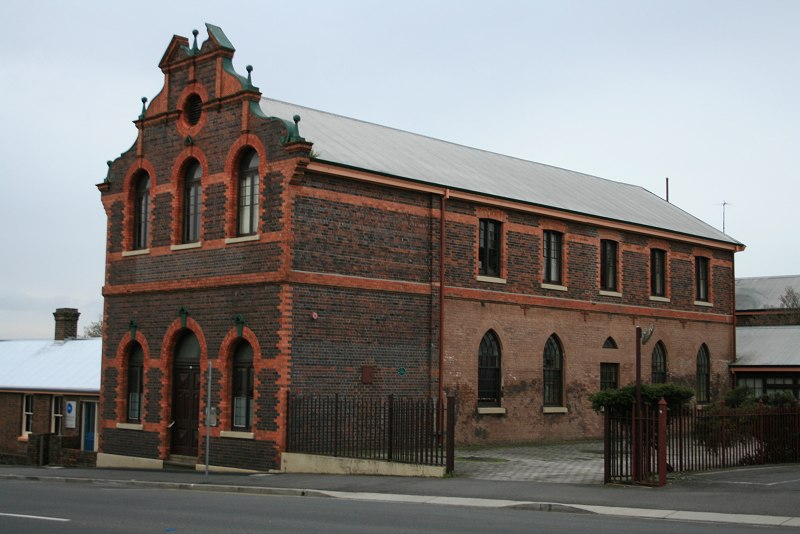
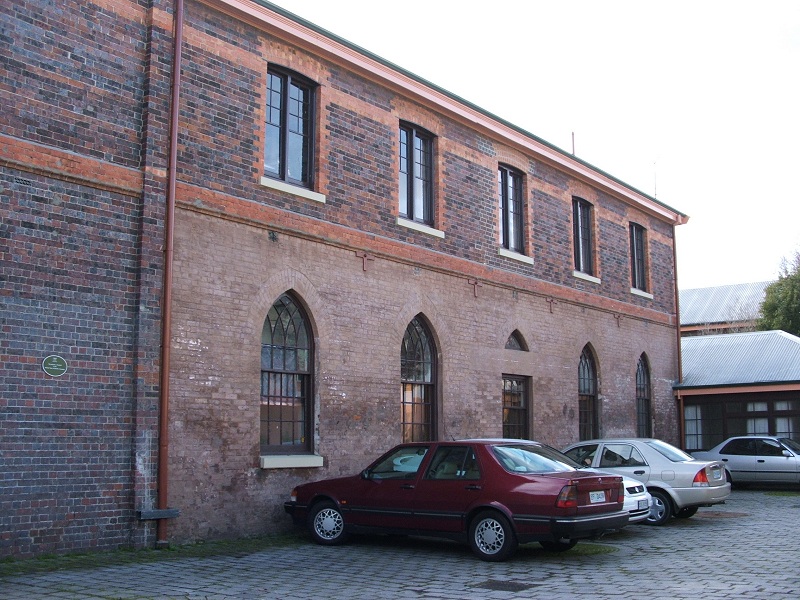

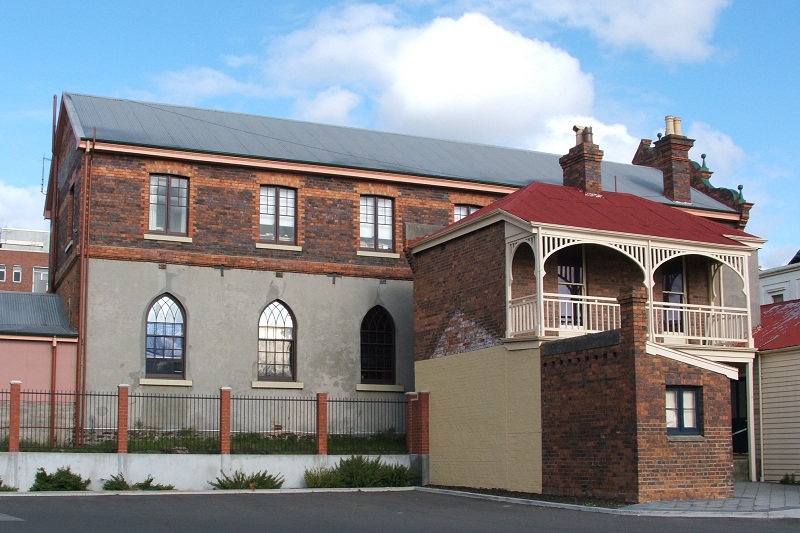
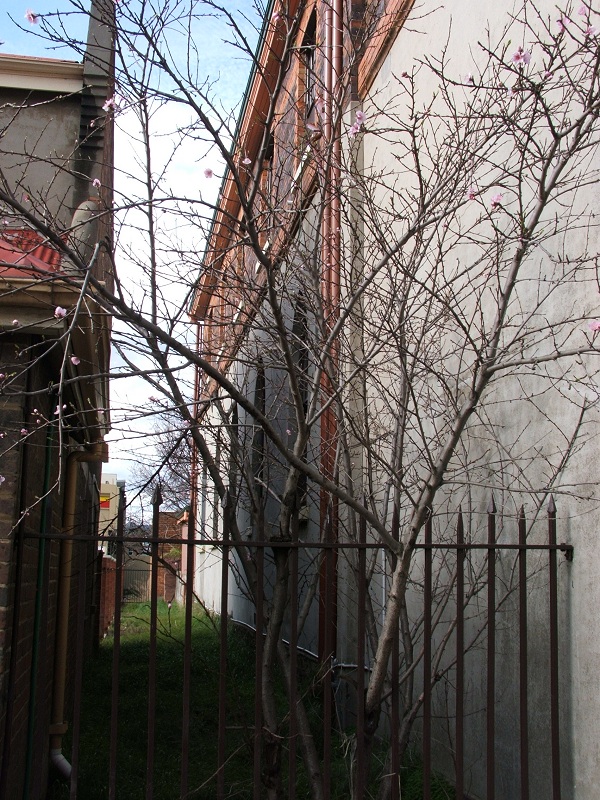
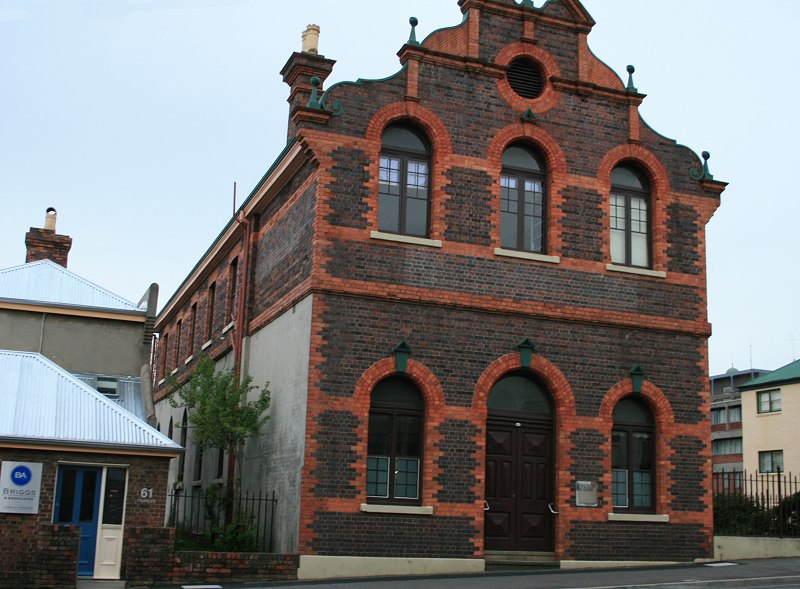
Trevor Allan
May 31, 2016 at 12:08amAn interesting old building. I have been looking at the street plan of the Henty residence and warehouse with Scott’s Chapel on the corner of Cimitiere and Charles street; about 1832. It may have been demolished when the National church was opened. Trevor Allan, Kilcunda, Victoria
Monissa Whiteley
May 31, 2016 at 12:21amI have no idea on the warehouse, but Scot’s chapel would be the church, and the residence is still there
Monissa Whiteley
May 31, 2016 at 12:26amActually, looking at the building on the corner, that could be the warehouse. All the same but different.
carolynlidgerwood
January 5, 2025 at 5:32amMy great great great grandfather William Lidgerwood was one of the original ‘subscribers’ that funded the building of the first Presbyterian Kirk in Launceston (as described in one of the newspaper extracts that you have included). It is great to see these photos and extracts from the newspapers – the old church structure is clearly visible as part of the larger building that grew around it. I appreciate you sharing your research on this site, thank you!